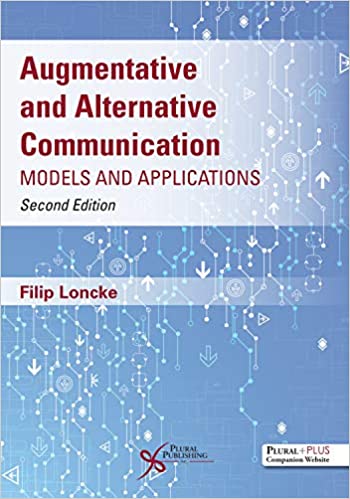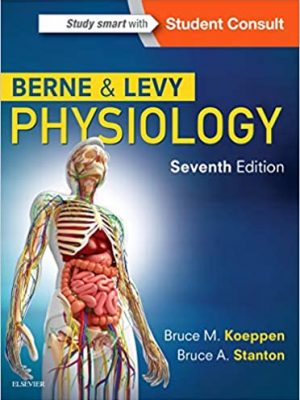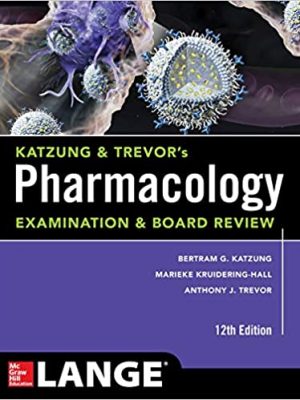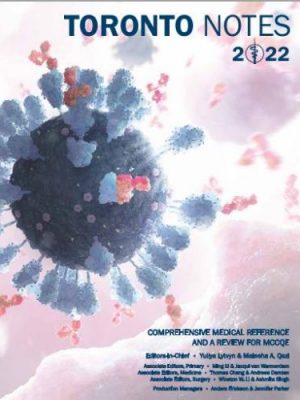Augmentative and Alternative Communication: Models and Applications 2nd Edition
Table of Contents
Introduction
Acknowledgments
Chapter 1. Augmentative and Alternative Communication: A General Introduction
What Is Augmentative and Alternative Communication?
Standard and NonStandard Forms of Communication Early Assumptions
Terminology
Learnability of Symbols
A Model for AAC Communication
AAC as Sender Support
Less Is More?
Alternative Access
Adapting Manual Signs
AAC as Support of Signal Transmission
Multimodality
AAC as Support of Receiver
Beyond the Communicator–Partner Interaction
Bronfenbrenner’s Ecological Model
To Sum Up
Points to Remember
References
Chapter 2. Access and Message Management
Typical Processes Involved in the MicroGenesis of Speech
A Proposed Framework to Understand Access
Rate of Expressive Communication
Access
Physical Access
Mental Access
Portability
Sender Access Facilitation
Intentionality
Lexicon Accessibility
Sets and Systems of Symbols: Do They Help in Lexical Access?
Access to Message Assembly Techniques
Message Externalizing
Behavior
Tools
Cognitive Processes
Message Transmission
Multimodality Principle
Materialization Principle
The Receiver’s Role and Assistance from Communication Partner
Help in the Physical Execution of the Message and Facilitated Communication (FC)
Help in Cause-Effect Grasping
Providing Choices
Help with Scanning
Lexical Help
Selection Strategies (Y-N Questions)
Strategic Feedback
Content Feedback
AAC Modeling
Points to Remember
References
Chapter 3. Nontech, Low-Tech, High-Tech, and Mobile Computing
Assistive Technology
Nontech, Low Tech, and High Tech
Nontech Solutions
Steering Technology
Movement-Sensing Technologies
Multi-Input Strategies
Language Representation Technology
Output Technology
Nontech Output
Device-Generated Speech
Desktop and Laptops
Tablets and Mobile Devices
Lexicon Technology
Lexicon Representation
The Super Lexicon and Increasing Interconnectivity
Growing and Accessible Databases
Conversion Technology
Word from/to Graphic Symbol
Manual Sign from/to Word
Simplification Technology
Recognition Technology
Speech Recognition
Integration with Other NonCommunication Technology
Conclusions
Points to Remember
References
Chapter 4. The Use of Symbols
What Are “Symbols”?
Symbol Classification
Unaided AAC Symbols
Unaided Symbols: Gestures
Everybody Uses Gesture
Conventional Gestures Are Manual Signs
Linguistic Unaided Symbols
Why Would Manual Signing Work?
Simplified Sign System
Key Word Signing
Aided AAC Symbols
Tangible Symbols
Graphic Symbols
Levels of Understandability of Graphic Symbols
Recognizable Graphic Symbols
Guessable Graphic Symbols
Symbols with Low Picturability
An Interesting Graphic Symbol System: Bliss-Words
Participics: Graphic Symbol Sets for a Specific Group
Animated Graphic Symbols
Adding Sounds to Graphic Symbols
Two Issues of Graphic Symbols: Polysemy and Sequentiality
The Polysemy Issue
The Sequentiality Issue
Uses for Graphic Symbols
Conclusions
Points to Remember
References
Chapter 5. Vocabulary and AAC
Words, Graphic Symbols, Manual Signs as Lexical Elements
Zipf’s Law, Core Vocabularies, and AAC
Typical Word Development
Balancing Number of Words with Accessibility Requirements: The Problem of Lexical Access
Teaching or Acquiring Vocabulary — Who Determines or Influences Lexical Growth?
The Core Vocabulary Approach
Comparing AAC and Typical Word Development — A Valid or Flawed Approach?
So, Is Core Vocabulary the Solution?
The Initial Lexicon
“Free Access” to Your Own Lexicon
Measuring Lexical Learning
Are Manual Signs the Lexical Equivalent of Words?
Manual Sign Lexicons
Are Graphic Symbols Really the Equivalent of Words?
Doing more with less?
Conclusion: The Vocabulary Challenge in AAC
Points to Remember
References
Chapter 6. AAC Intervention at the Prelinguistic and Early Linguistic Stages
The Beginnings of Communication
Forms of Communication
Functions of Communication
Behavior Regulation
Social Interaction
Joint Attention
From Unintentional Behavior to Intentional Communication
Understanding Cause-Effect
The Use of Tools
The Genesis of Internal Mental Representations
Symbol Development
When Does Communication Become Language?
From Idiosyncratic to Conventionalized Symbols
Communication and Symbol Development as Part of Interaction
Symbols Become Part of a Larger Structural Multilevel Combinatorial System
The Communication Matrix
AAC Solutions for Early Intervention
Determining the Communication System in Place
The Partners
The Communicative Environment
Making Unintentional Behaviors Intentional
Identify Potential Communicative Acts
Select Accessible Symbols
Transition to Linguistic Symbols
AAC Applications for People with Severe Developmental Limitations of All Ages
Make and Keep Communication Functional
Address Problem Behavior
Other Intervention Techniques
Requesting and Rejecting
Beyond Requesting and Rejecting
Extension of Communicative Repertoire
References
Chapter 7. AAC Applications for Individuals With Autism
Autism Spectrum Disorders and the Acquisition of Communication Through AAC
Barriers and Facilitators
Predictors, Moderators, and Mediators
The Specific Nature of Autism and AAC
The Visual Modality, Visual Processing, and Attention
Teaching Needs
AAC and Social Skills in Individuals with an Autism Diagnosis
References
Chapter 8. Language Intervention and AAC
How Are the Main Mechanisms of Language Acquisition Affected by the Use of AAC?
Biological Factors
Language Exposure
Cognitive Challenges
Social Regulations
What Is the Effect of the Decreased Output Possibilities?
What Do We Know About the Developing Lexicon?
What Do We Know About Phonology, Morphology, and Syntax Development?
Morphology and Syntax
How Does the Use of AAC Affect Literacy?
How Does Software in AAC Devices Represent Language, and Does It Facilitate Language Acquisition?
Language Learning Through Interaction
Code-Switching
Amount of Exposure to Communication and its Influence
Learning Structures and Strategies
Modeling
Recasting
Points to Remember
References
Chapter 9. AAC and Literacy Development
Literacy Acquisition and AAC Use: An Interesting Relation
A Help or a Barrier?
Three Abilities and Levels of Graphic Symbol Use
(1) The Ability to Pay Attention to Specifics of a Pictorial Representation
(2) The Ability to Understand the Referential-Pictorial Meaning of a Graphic Symbol
(3) The Ability to Insert a Pictorial Representation in a Meaningful Way in a Sequence of Actions
Can Graphic Symbols Aid Word Recognition Through Association?
Are the Graphic Symbols a Help to Literacy?
Literacy Activities and a Literacy Curriculum for AAC Users
Different Challenges at Different Stages
Literacy Activities as Compensatory AAC Strategies
Measuring Competencies
Becoming a Writer
AAC and Literacy in the Future
Points to Remember
References
Chapter 10. AAC and Intervention with Acquired Communication Disorders
An Increasing Prevalence
The Nature of the Condition: Cognitive, Linguistic, or Motor
What Is the Linguistic Nature of Disorder?
What Is the Motor Nature of the Disorder?
What Are the Cognitive Elements Affecting the Disorder?
Other Questions
Natural Speech
Acquired Cognitive Challenges
Acquired Linguistic Challenges
Functional Considerations and Classifications
Acquired Motor Impairment
Amyotrophic Lateral Sclerosis
Brainstem Dysfunction
Other Acquired Predominantly Motor Disorders
AAC as Therapy and Rehabilitation Tool
Short- and Long-Term Goals
Effects of (Partially) Device-Based Language Therapy
Acceptability
TelePractice, Self-Therapy, and Distance Intervention
Conclusion 184 Points to Remember
References
Chapter 11. AAC in Medical Environments
Exchanging Medical Information with AAC Users
Exchanging Medical Information with Non AAC Users
AAC as a Short- and Long-Term Solution for Exchanging Medical Information
References
Chapter 12. AAC and Assessment
AAC Assessment Is Part of AAC Intervention
Determination of AAC Needs
Communicative Competence as Object of Assessment
Assessment of the Larger Picture
AAC Assessment Is an Ongoing Decision-making, Testing, and Adjusting Process
Principles of AAC Assessment
Quantification
Can We Predict the Future?
Dynamic Assessment
Measuring Instruments
Measuring Communication as Part of a Developmental Component
Communication Competence Profile
Assessment of PreLinguistic and Early Linguistic Functioning
Language Tests and Their Usability
Measuring of Specific AAC-Related Skills
Conducting an Evaluation
Functional, Developmental, and Dynamic Interpretation of the Data
Feature Matching
The “Fives Approach”
Multidisciplinarity
Working with Manufacturers and Sales Representatives
Report Writing
New Ways of Assessment and Data Gathering
Costs and Funding
Points to Remember
References
Chapter 13. Intervention and AAC
Anticipated and Desired Outcomes
Who Sets the Goals? The Client and the Community of Practice
Creating and Maintaining a Communicative Environment
Planning or Natural Development?
Evidence-Based Practice
Points to Remember
References
Chapter 14. AAC and the Community
The Community — or the Communities
Social Networks
Making Meaning Through Interaction
Multiple Challenges
Attitudes and AAC
Attitudes of Peers
The AAC User as a Member of Cultures
AAC Linguistic Diversity
AAC and the Family
AAC in Education
Educational Goals and Organizing the Classroom
Inclusiveness
Universal Design for Learning
Educational Practices and Opportunities
Post-High School
Transitions to Adult Life
AAC in the Workplace
AAC and the Development of Friendships
The Virtual Community
Communication Assistants
Aging
Connections with the World
Risk of Abuse
AAC Users and Research
Points to Remember
References
Chapter 15. The AAC Experience
What Does It Mean to Be an AAC User?
The Difference Made by the AAC Solution
The Uniqueness of the AAC Experience
A Community of AAC Users
Where Do I Get Help?
Discussions about What Works Best
The Broken AAC Device
The New and Better AAC Device — Or Not So Much Better
Sexuality
AAC as a Normal Phenomenon
Perspectives of Hope, Expectations, and Fears
Points to Remember
References
Appendix 1. AAC and Natural Speech
Appendix 2. Case Discussions
Appendix 3. Discussion and Debate Topics
Appendix 4, Speech-Language and AAC Assessment Protocol
Index
Filip Loncke, PhD, is a professor at the University of Virginia. For more than three decades he has practiced and conducted research in augmentative and alternative communication (AAC). Dr. Loncke is a past president of the International Society for AAC (ISAAC). He has lectured and taught AAC courses in the United States and Europe since the early 1990s. As reflected in this volume, his research interest is in cognitive and psycholinguistic processes involved in atypical communication.



























 Dentistry
Dentistry
Reviews
There are no reviews yet.